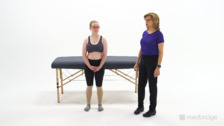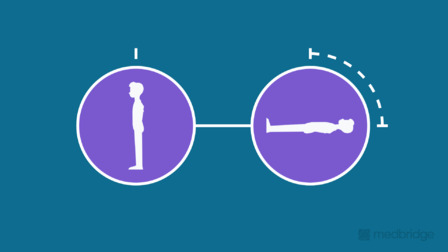Abdominal Vascular Compression Syndromes in HSD/EDS:
Presentation and Evaluation
Presented by Patricia Stott and Amy Morris
12-Month Subscription
Unlimited access to:
- Thousands of CE Courses
- Patient Education
- Home Exercise Program
- And more
Abdominal compression pathologies are more common in those with connective tissue issues. They are also more commonly found with multiple areas of compression sites. These individuals may also require specialty surgical interventions for the most optimal outcomes. Clinically recognizing this condition and its contributing factors can help with early treatment, prevent the need for surgical intervention in some cases, or lead to better surgical outcomes.
Learning Objectives
- Reflect on the research supporting compression pathologies being more prevalent in HSD/EDS
- Evaluate the anatomy involved with compression pathologies
- Interpret the clinical presentation of compression syndromes in an individual
- Integrate the examination techniques in clinical practice to determine the contributing factors for compression pathologies
Meet your instructors

Patricia Stott
Patricia Stott treats primarily those with HSD/EDS and those considered highly sensitive patients at her own practice, Elevation Wellness, outside the Denver metro area in Colorado. Also trained in functional and herbal medicine, she works on health and wellness through holistic strategies with these patients, both in person…

Amy Morris
Amy graduated from Thomas Jefferson University in 1992 with a master’s degree in physical therapy. She is the owner of Ahimsa Therapeutics in Langhorne, Pennsylvania. Amy has extensively studied manual therapy modalities, including craniosacral therapy, neural, vascular, and visceral manipulation. Amy is also certified in the…
Chapters & learning objectives

1. Abdominal Compressions in the HSD/EDS Population
Neurovascular abdominal compression is more common in those with HSD/EDS. The sooner this is recognized and evaluated appropriately, the better the prognosis for the individual may be.

2. Contributing Factors in Compression Pathologies
Neurovascular abdominal compressions can include a range of structural, biomechanical, and neurological contributing factors. In this chapter, we review associated presentations that require investigation in individuals suspected of having abdominal compression pathologies.

3. Clinical Presentation of Abdominal Vascular Compressions
In this chapter, we review the common biomechanical, structural, and pressure-related issues seen with compression pathologies and provide demonstrations of patients with these issues.

4. Examination of Contributing Factors
This chapter reviews the examination techniques recommended to consider when screening an individual for compression pathologies. We also review biomechanics, pressure regulation, structure, and breath patterns.
More courses in this series

Presentation of GI and Abdominal Comorbidities of HSD/EDS
Amy Morris and Patricia Stott

Abdominal Vascular Compression Syndromes in HSD/EDS: Presentation and Evaluation
Amy Morris and Patricia Stott

Abdominal Vascular Compression Syndromes in HSD/EDS: Treatment Paradigm
Amy Morris and Patricia Stott